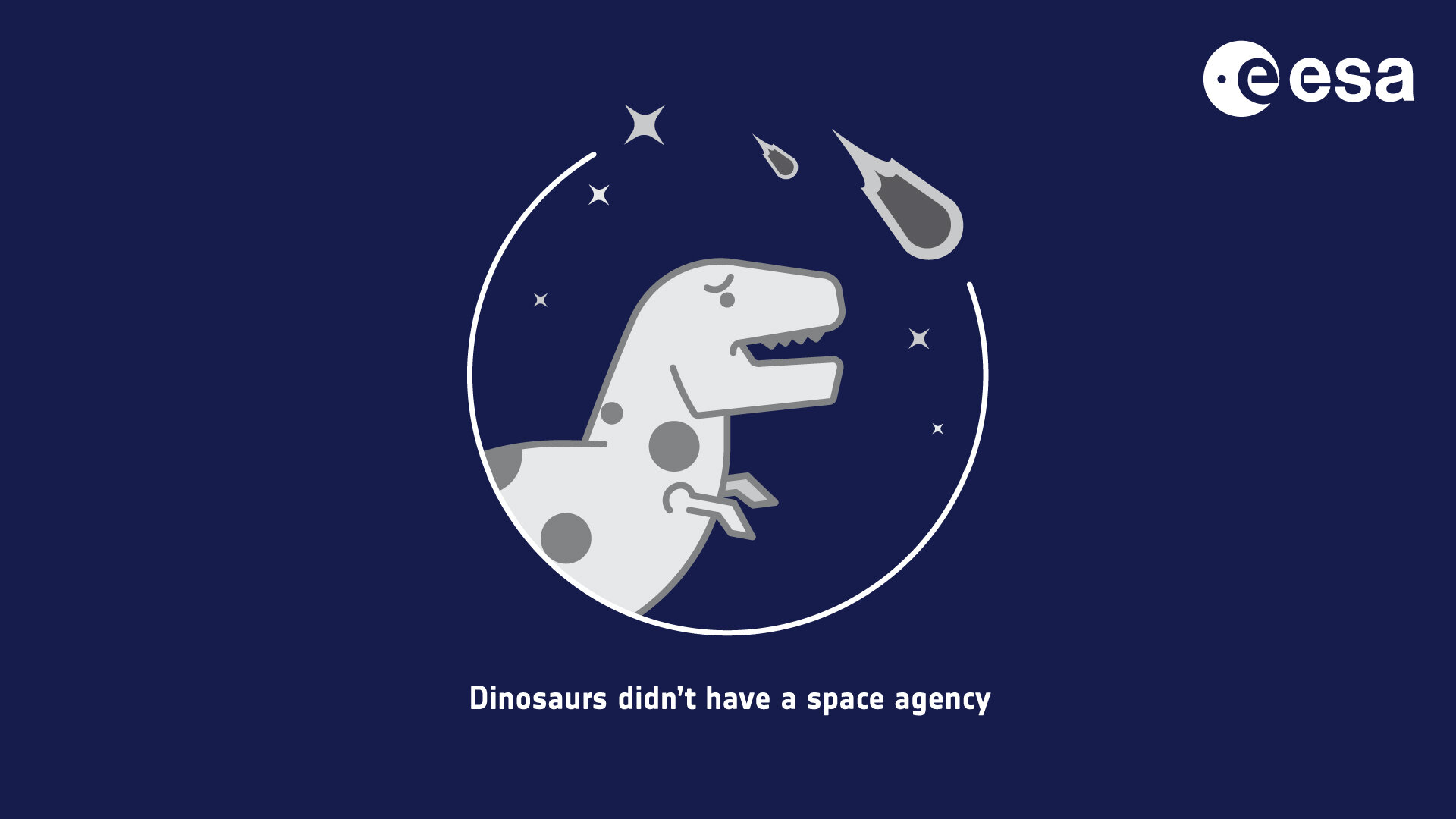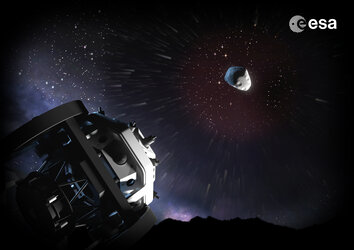Near-Earth Object Coordination Centre
ESA’s Near-Earth Object Coordination Centre (NEOCC) is the operational heart of the Agency’s Planetary Defence Office.

Based at ESA's ESRIN site in Frascati, Italy, the NEOCC is the central access point to an entire network of European near-Earth object data sources and information providers.
Every day, the coordination centre uses this information, gathered from across the globe, to provide orbital information, impact monitoring, data provision and risk analysis.
Its aim is to contribute to and coordinate observations of small bodies in the Solar System – such as asteroids and comets – to evaluate and monitor the threat posed by those that come near Earth, and propose mitigation measures if needed, (for example to emergency response agencies in case of an imminent impact).
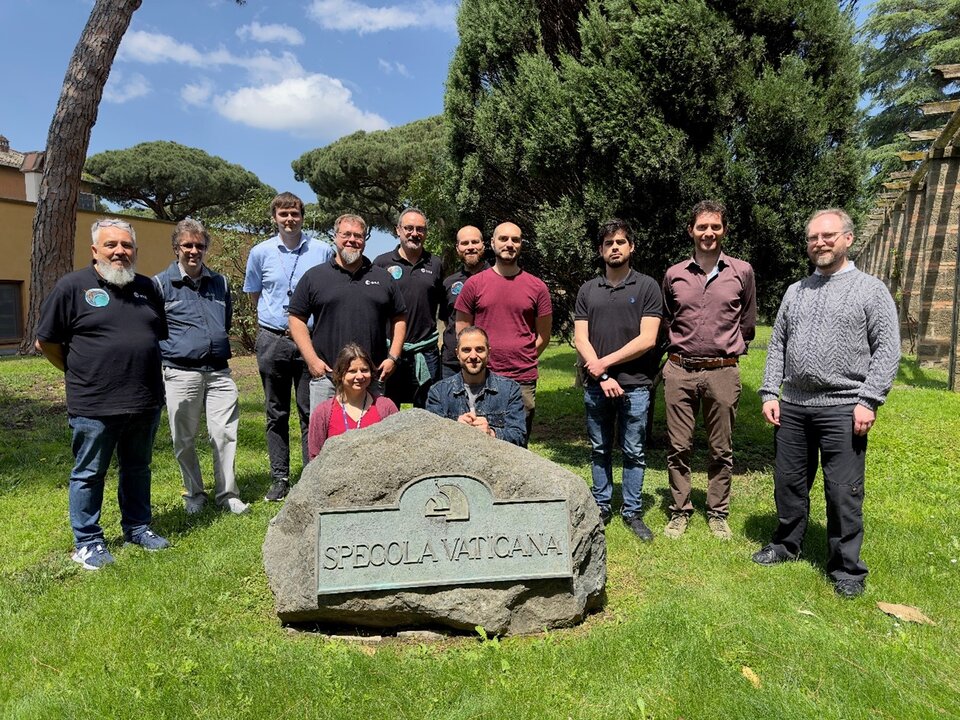
The Coordination Centre is also the focus point for studies aiming to improve near-Earth object warning services, needed to give near-real-time data and alerts to European and international customers, including scientific bodies, international organisations and decision-makers.
The Centre maintains a website with the latest information on asteroid populations and statistics, upcoming close asteroid flybys, ESA's asteroid risk list and much more.
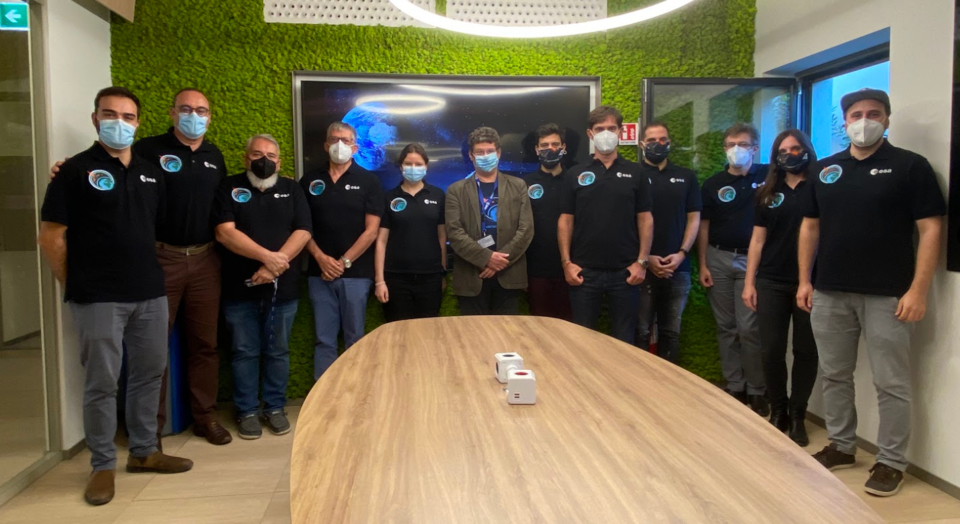
The NEOCC and the Planetary Defence Office are integral parts of the ESA's Space Safety Programme, which works to understand, avoid and mitigate hazards from space and protect our Pale Blue Dot, its inhabitants, and the vital infrastructure on which our modern lives have become dependent.
These hazards include possible collisions between satellites or space debris in orbit, harmful space weather and potential impacts by natural objects, such as asteroids, that cross Earth’s orbit around the Sun.
Meerkat and Aegis – ESA’s automated asteroid warning systems
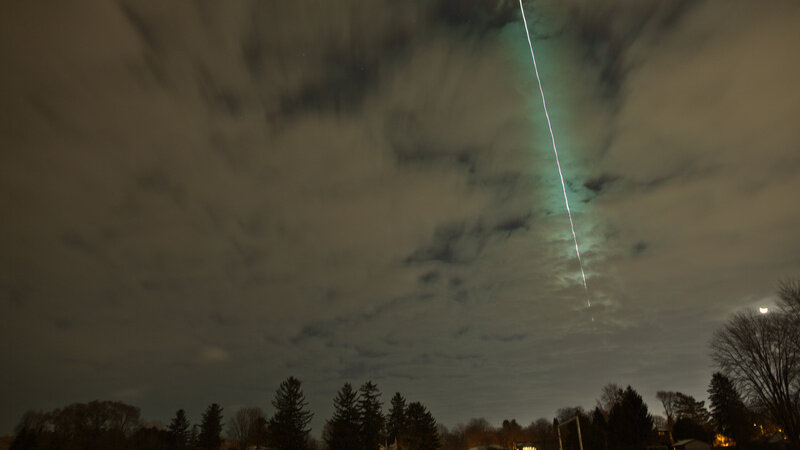
The NEOCC has developed two automated data processing systems that form the core of Europe’s early warning capability for asteroid hazards. Meerkat continuously scans incoming NEO observational data to flag potential imminent risks, while Aegis evaluates asteroid impact probabilities much further into the future. Together, they enable faster risk assessment and information sharing for objects that could pose a hazard to Earth.
Meerkat – predicting Earth impacts in the next 30 days
The Meerkat Asteroid Guard is an automated imminent impactor warning system developed and operated by the NEOCC. Its primary function is to detect and assess NEOs that pose an immediate likelihood of impacting Earth, typically within the next 30 days.
Key features
- Meerkat operates 24 hour per day, seven days per week, analysing newly discovered objects listed on the Minor Planet Center's Near-Earth Object Confirmation Page – the international hub for asteroid detections and observations.
- When observational data is limited, traditional orbit determination methods may be ineffective. Meerkat employs ‘systematic ranging’, a technique that computes a grid of possible orbits based on available data, to estimate the object's trajectory and assess potential impact risks.
- If an object is identified with a significant impact probability (typically above 1%) or is projected to pass within seven Earth radii, Meerkat automatically sends email notifications to subscribed observers and researchers. These alerts include detailed plots and data to facilitate rapid follow-up observations.
- Meerkat has successfully identified several imminent impactors, including asteroids 2022 EB5, 2022 WJ1, 2023 CX1, and other recent impactors providing timely warnings that enabled follow-up observations and the discovery of meteorite fragments on Earth.
Accessing Meerkat data

Researchers and observers can subscribe to the Meerkat Asteroid Guard alert mailing list by contacting the NEOCC. This collaboration aims to enhance global preparedness and response to potential asteroid impacts.
More detailed information can be found in this publication: Meerkat Asteroid Guard – ESA's Imminent Impactor Warning Service.
Aegis – predicting Earth impacts in the next 100 years
The Aegis system is an automated orbit determination and impact monitoring tool developed under ESA contract by SpaceDyS s.r.l. and operated by the NEOCC. It plays an important role in assessing and tracking NEOs that could potentially pose a hazard to Earth within the next century.
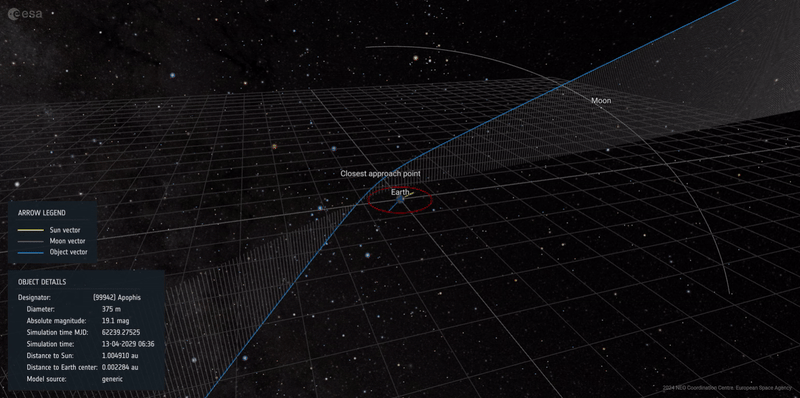
Key features
- Aegis updates its database daily by incorporating new objects and new astrometric observations from the Minor Planet Center, ensuring that the information on NEOs is current and comprehensive. It then computes the asteroid trajectory by performing the orbit determination process.
- The system then computes the impact probabilities of NEOs over the next 100 years. Objects with non-zero impact probabilities are listed in the publicly accessible risk list on the NEOCC web portal. For objects with higher impact probabilities, Aegis can calculate the potential impact corridor on Earth.
- Aegis functions independently from NASA's Sentry and NEODyS's Clomon-2, providing ESA with autonomous capabilities in orbit determination and impact risk assessment.
- Aegis was recently upgraded to make it faster, more resilient, and ready for a new era of asteroid data. It now supports advanced data formats in anticipation for the large volumes of data that will be generated by next-generation observatories such as ESA’s Flyeye telescopes, the Vera Rubin observatory, and NASA’s NEO Surveyor, and runs on ESA’s private cloud for enhanced performance, security and reliability.
- Data generated by Aegis supports various tools and services offered by the NEOCC, such as orbit and flyby visualisers, close approaches, ephemerides requests, and other components of the NEO Toolkit.
Accessing Aegis data
The information computed by Aegis is publicly available through the NEOCC web portal, where interested parties can access detailed data on NEOs, including their orbits, physical properties, and potential impact risks.
A more in-depth understanding of Aegis and its functionalities can be found in this paper: Aegis: ESA's Planetary Defence Office orbit determination and impact monitoring software.
Contact
Richard Moissl
Head, Planetary Defence Office
ESA/ESRIN, Frascati, Italy
Tel: +39 337 141 3570
richard.moissl@esa.int















 Germany
Germany
 Austria
Austria
 Belgium
Belgium
 Denmark
Denmark
 Spain
Spain
 Estonia
Estonia
 Finland
Finland
 France
France
 Greece
Greece
 Hungary
Hungary
 Ireland
Ireland
 Italy
Italy
 Luxembourg
Luxembourg
 Norway
Norway
 The Netherlands
The Netherlands
 Poland
Poland
 Portugal
Portugal
 Czechia
Czechia
 Romania
Romania
 United Kingdom
United Kingdom
 Slovenia
Slovenia
 Sweden
Sweden
 Switzerland
Switzerland

























